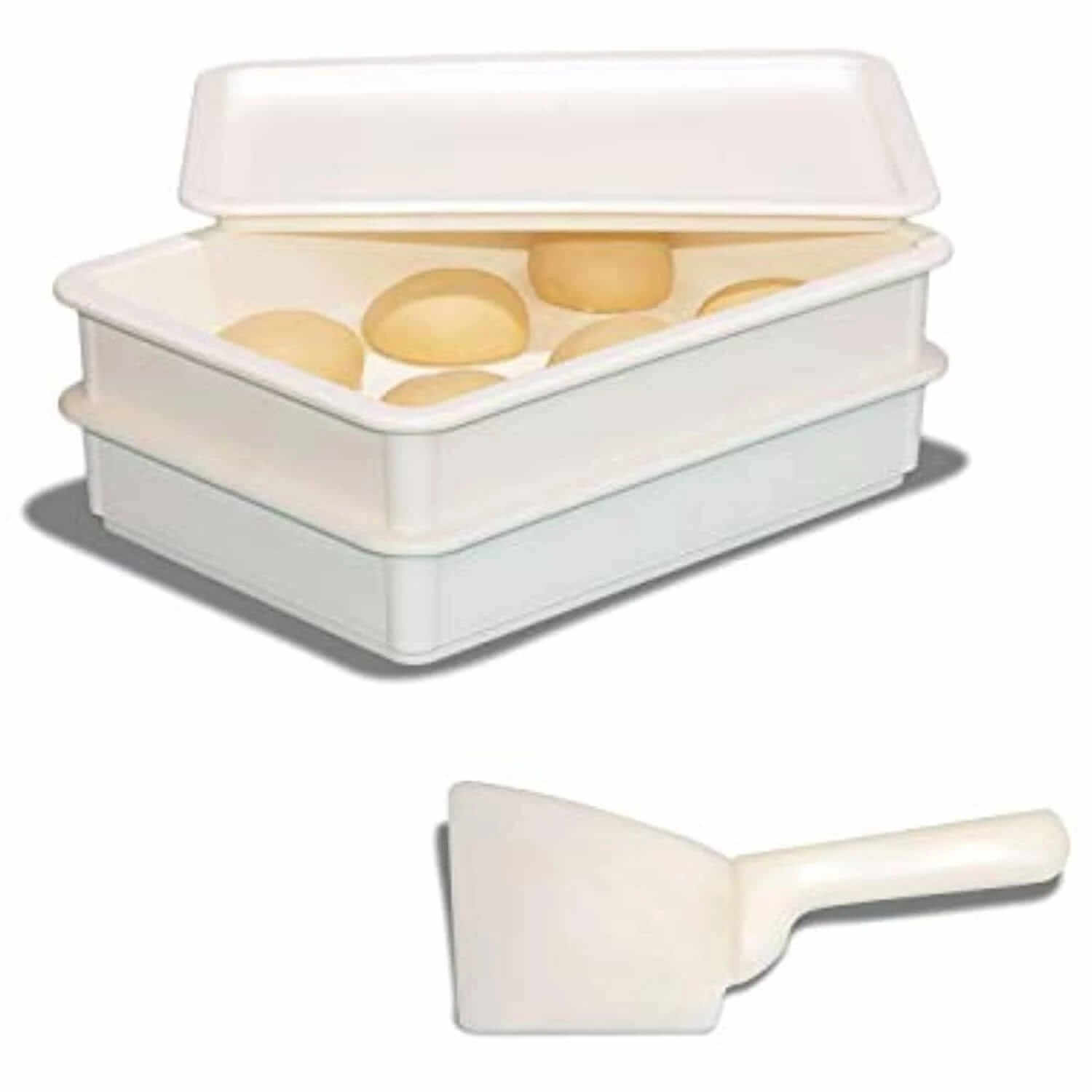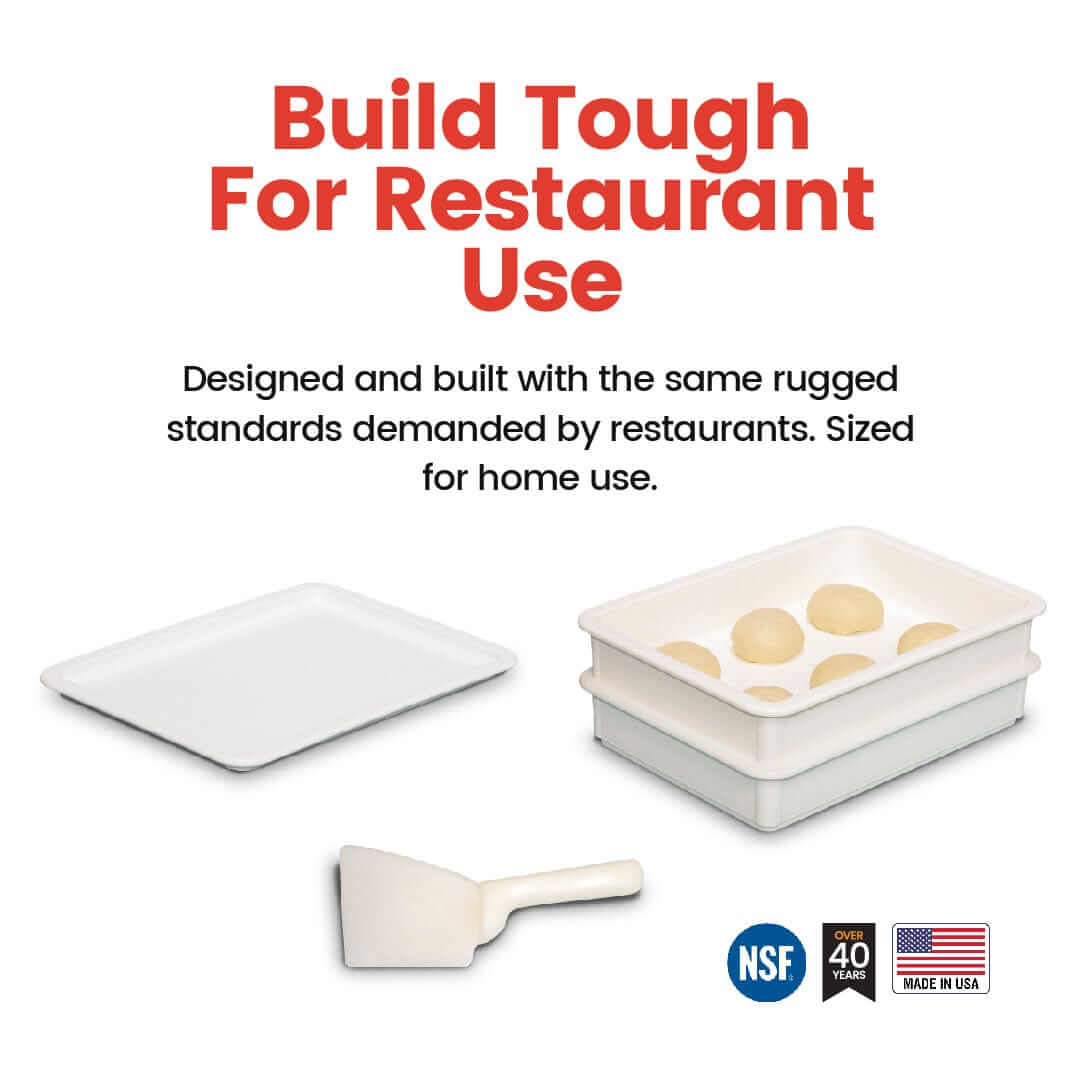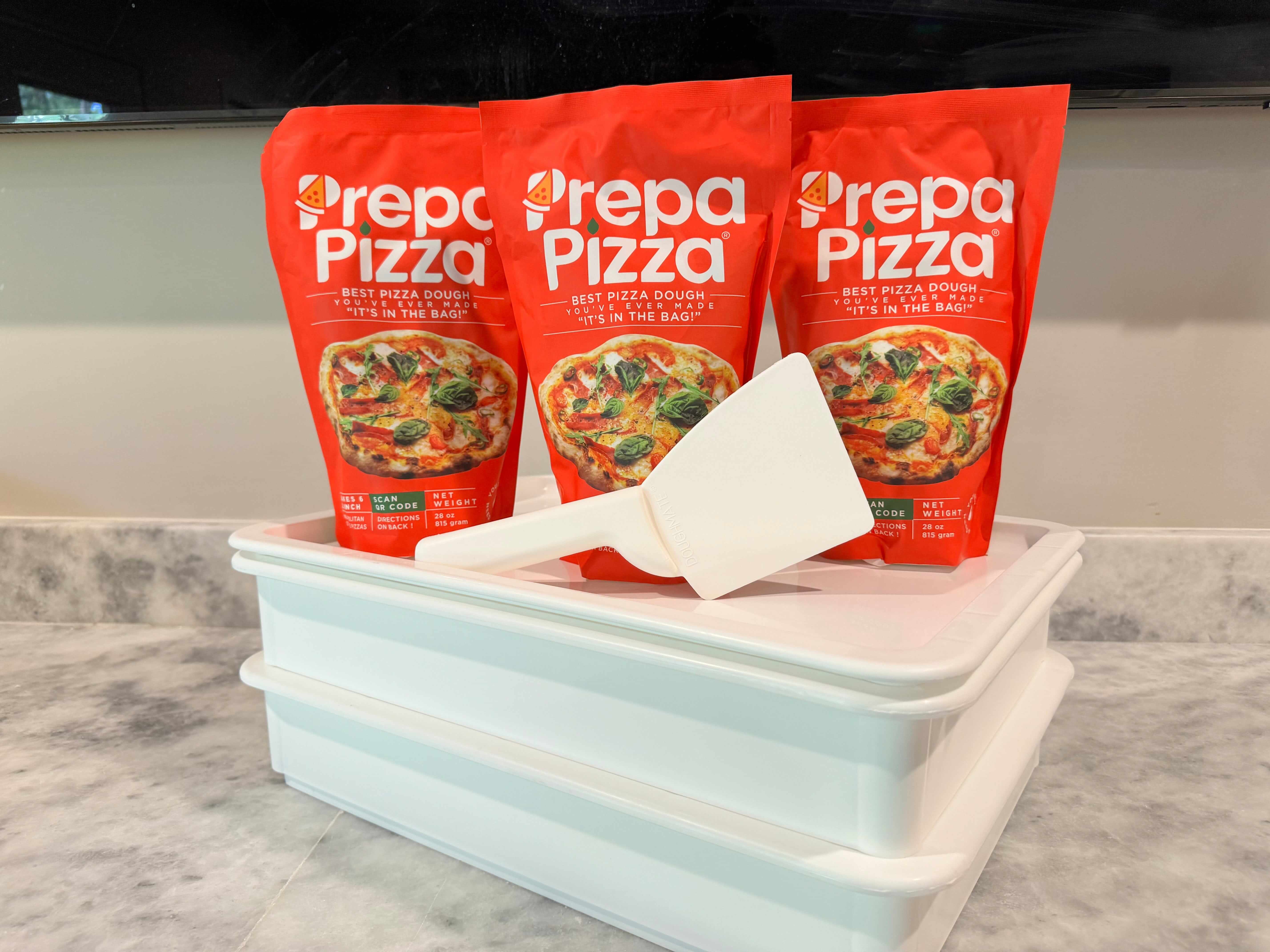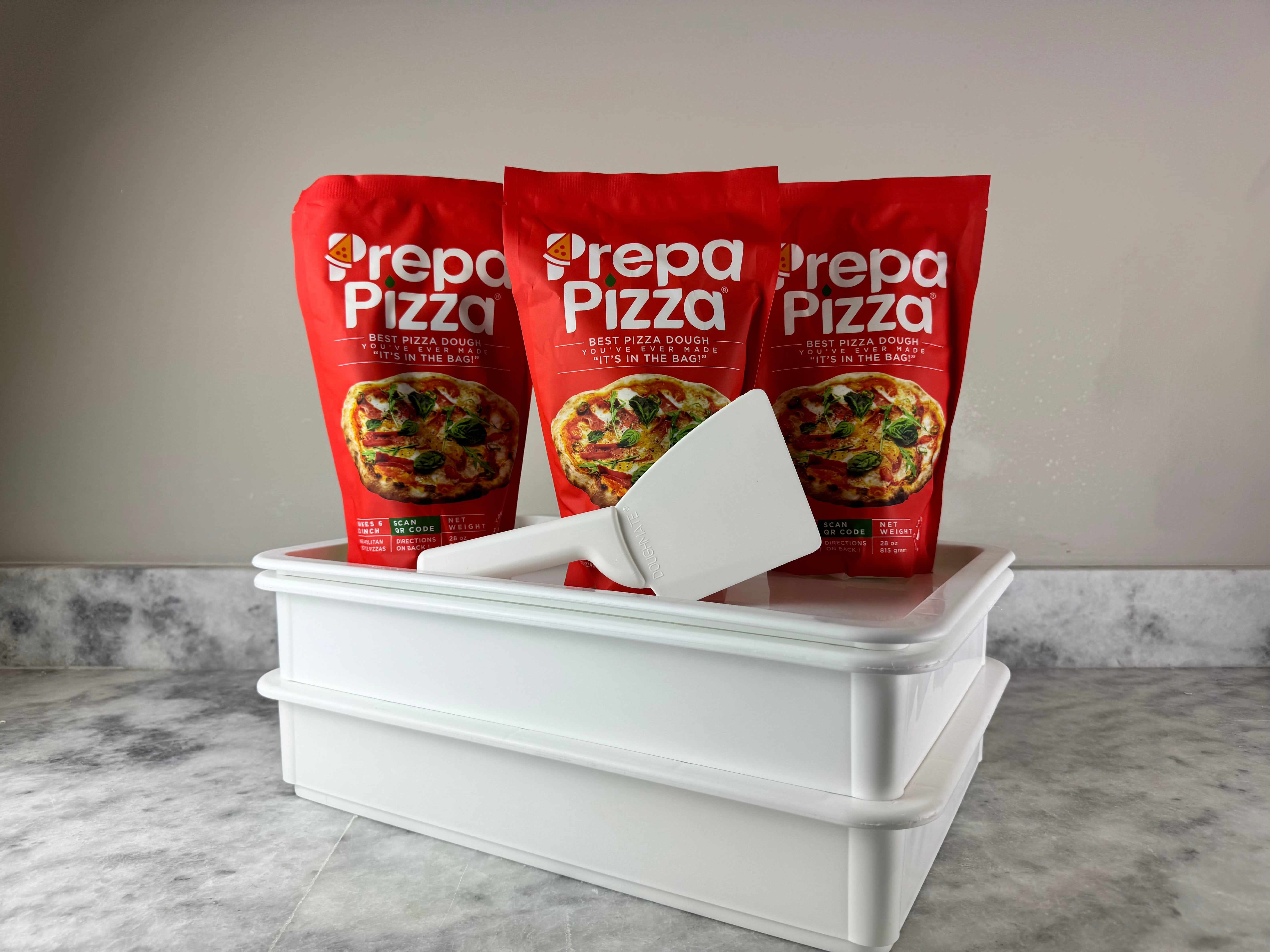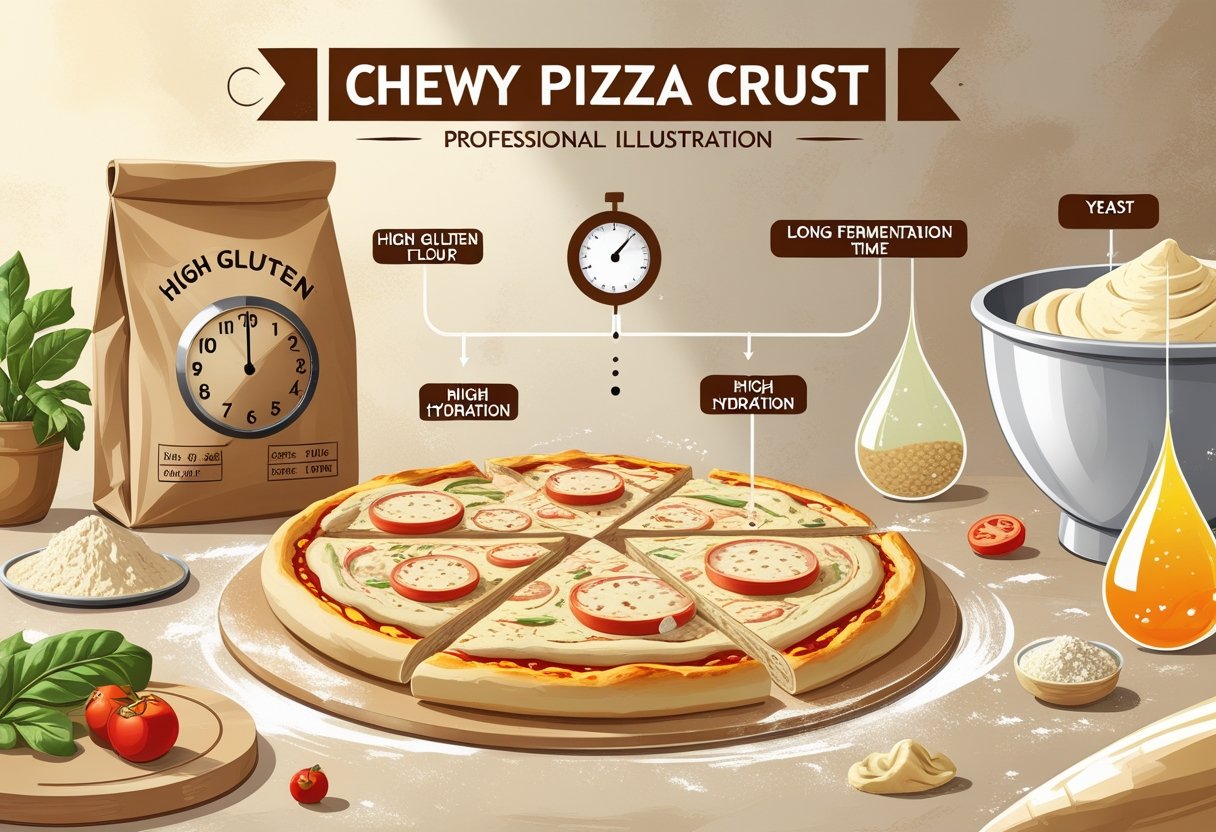
What Causes Chewy Pizza Crust Explained with Key Baking Factors
If you’ve ever bitten into a pizza and found the crust unexpectedly chewy, you might wonder what causes that texture. Chewy pizza crust usually results from factors like the type of flour used, dough hydration, and how the dough is handled during preparation. Understanding these details can help you get the perfect balance between tenderness and chewiness.
Using high-quality dough like Prepa Pizza’s premade dough, made from premium ingredients, can make a big difference in texture and consistency. Their dough is carefully formulated to deliver restaurant-quality results without the guesswork, helping you avoid common mistakes that lead to excessive chewiness. You can explore their options and get started with ease at Prepa Pizza’s dough kit page.
Knowing how flour protein level, hydration, and kneading affect your dough can empower you to control your crust’s texture. This article will guide you through the main causes of chewiness and how to prevent them, ensuring your pizza crust turns out just right every time.
Key Factors Behind Chewy Pizza Crust
Getting the perfect chewy pizza crust depends on a balance of ingredient quality and technique. How gluten develops, the amount and type of flour used, and water content all play critical roles in shaping the texture. Using top-quality dough like Prepa Pizza’s premade dough kit helps ensure you start with the right foundation for achieving that ideal chewiness Prepa Pizza Dough Kit.
Understanding these factors lets you control the outcome, whether you want a soft chew or a firmer bite. Since Prepa Pizza uses restaurant-quality ingredients, their dough is already optimized for excellent gluten development and hydration.
Role of Gluten Formation
Gluten is a network of proteins that form when flour and water combine. It provides the structure that traps gases during fermentation, allowing the dough to rise and develop its texture. The amount and quality of gluten determine how chewy your pizza crust will be.
Kneading is essential because it aligns gluten strands, strengthening this network. The more you knead the dough, the more developed the gluten becomes, which increases chewiness. However, over-kneading can make the crust tough.
Prepa Pizza’s dough is prepared with precise kneading and high-protein flour, which ensures sufficient gluten development for a consistent chew without toughness. Proper fermentation time also allows gluten to relax slightly, balancing chewiness with softness.
Impact of Excess Flour
Using too much flour can significantly affect the texture of your pizza crust. Excess flour during mixing or dusting can dry out the dough, reducing hydration and causing the crust to become dense and tough.
If the flour-to-water ratio is off, gluten formation can be impaired. This imbalance leads to crust that feels heavy and excessively chewy in an undesirable way.
When you work with Prepa Pizza’s premade dough, the flour is already measured and mixed correctly, so you avoid this common issue. This premium dough ensures the right flour content for optimal elasticity and a well-balanced chew.
Influence of Water Content
Water content, or hydration, affects the dough’s texture and the crust’s final chewiness. Higher hydration increases gluten development and makes the dough more extensible, which supports a softer, chewy texture.
If the dough is too dry, it won’t develop gluten properly, leading to a stiff, dense crust. Too wet, and it can become sticky, difficult to stretch, and may not hold shape during baking.
Prepa Pizza formulas maintain ideal hydration levels, typically around 60-65%, which is optimal for creating a chewy yet tender crust. This balance helps you get consistent results without extra adjustments or guesswork.
| Factor | Effect on Crust Texture | Prepa Pizza Advantage |
|---|---|---|
| Gluten Formation | Builds chewiness and structure | High-quality flour and controlled kneading |
| Excess Flour | Can dry and toughen crust | Precise flour balance in premade dough |
| Water Content | Controls softness and chewiness | Optimal hydration for texture and handling |
Dough Ingredients and Their Effects
Key factors such as flour type, yeast activity, and the balance of salt and oil greatly influence the texture of your pizza dough. Adjusting these ingredients determines whether your crust will be chewy, tender, or crispy. Using high-quality dough like Prepa Pizza’s premade dough, which carefully selects ingredients to optimize crust texture, can simplify this process and elevate your pizza-making experience. You can explore and purchase their premium dough here.
Understanding how each ingredient contributes to dough texture allows you to control chewiness with precision. This section breaks down the role of flour, yeast and sugar, as well as salt and oil.
Choosing the Right Flour Type
Flour type is fundamental to dough structure. Bread flour, which has a higher protein content (usually 12-14%), produces more gluten. Gluten forms the chewy network that gives pizza crust its elasticity and strength.
All-purpose flour contains less protein (about 10-12%) and results in a softer, less chewy texture. Using bread flour or a blend of bread and all-purpose flour increases chewiness without making dough tough.
Wheat flour’s gluten quality also impacts chew. Strong wheat protein from well-milled bread flour delivers the best chew. Flours with insufficient protein lead to crumbly or overly soft crusts.
Key point: If you want a noticeably chewy crust, choose bread flour or premium blends like those in Prepa Pizza’s dough kits, designed for consistent gluten development.
Importance of Yeast and Sugar
Yeast is the leavening agent that causes dough to rise by fermenting sugars and releasing carbon dioxide. Proper yeast activity creates bubbles, improving dough texture and chewiness.
Sugar feeds yeast and speeds fermentation but should be used sparingly. Too much sugar can accelerate yeast too quickly, causing a dense or overly chewy crumb. A balanced amount ensures even fermentation and light chewiness.
Prepa Pizza’s premade dough uses an optimized yeast-sugar ratio to deliver reliability in fermenting and dough rise, so you get consistent chew with every batch.
If you proof yeast at the right temperature with moderate sugar, the dough develops flavor and texture, avoiding stiffness related to under- or over-fermentation.
Effect of Salt and Oil
Salt controls yeast fermentation rate and strengthens gluten bonds, adding structure without excessive chewiness. Skipping or reducing salt can cause dough to rise unevenly and feel doughy or tough.
Oil, especially olive oil, tenderizes dough and adds moisture. It coats gluten strands, limiting toughness and resulting in a softer, more pliable crust. Too little oil can make dough dry and overly chewy; too much makes it greasy.
Prepa Pizza incorporates precise salt and olive oil measurements to balance chew and texture, ensuring the crust is firm yet tender.
Summary table:
| Ingredient | Role in Dough | Effect on Chewiness |
|---|---|---|
| Bread Flour | High gluten development | Increases chew |
| Yeast & Sugar | Fermentation and rise | Balanced, improves texture |
| Salt | Controls yeast, strengthens gluten | Prevents doughiness |
| Olive Oil | Tenderizes and moisturizes | Reduces toughness |
Using premium dough like Prepa Pizza’s premade dough ensures these ingredients are combined properly to give you a consistent, high-quality chewy pizza crust.
Methods That Increase Chewiness
Chewiness in pizza crust depends largely on how the dough is handled before baking. Proper techniques focus on developing gluten and allowing the dough to mature, which improves texture and elasticity. Using a premade high-quality dough like Prepa Pizza's ensures you start with a solid base for achieving the right chewiness.
Prepa Pizza's premade dough is crafted with premium ingredients and optimal gluten development, saving you time while guaranteeing consistent chewiness in your crust. You can explore their Prepa Pizza dough kit to simplify the process without sacrificing texture.
How Kneading Impacts Texture
Kneading is essential to gluten development, the protein network that gives pizza dough structure and chewiness. When you knead dough, you stretch and align gluten strands, which creates elasticity and the ability to trap gases produced during fermentation.
Under-kneaded dough will be weak and produce a crumbly crust, while over-kneading can make the dough overly tough and dense. The goal is to knead just enough to develop a smooth, elastic dough without breaking the gluten network.
Using Prepa Pizza's premade dough reduces the risk of improper kneading since it’s already prepared with the right gluten strength. This gives you a consistent starting point to achieve that chewy bite without extra work.
Influence of Dough Resting and Proofing
Resting and proofing allow gluten to relax and the dough to ferment, which improves chewiness and flavor. When you let dough rest, the gluten strands loosen, making the dough easier to stretch and less likely to tear.
Slow, cold fermentation—such as proofing dough in the refrigerator—enhances gluten structure and develops deeper flavors over time. This process strengthens the dough’s chew without needing excessive kneading.
Prepa Pizza’s dough is designed to benefit from proper proofing times, allowing you to control chewiness by adjusting resting durations. Following recommended resting steps ensures your crust develops the ideal balance of elasticity and texture.
Baking Techniques and Crust Texture
Your baking methods significantly influence the chewiness and overall texture of the pizza crust. Adjusting oven temperature, baking duration, and the use of ingredients like cornmeal or bran can impact the crust’s firmness and mouthfeel.
Using premium quality dough, like Prepa Pizza’s premade dough, ensures a strong foundation for these techniques. Their dough kit offers consistent gluten development and moisture levels, letting you focus on fine-tuning baking parameters for ideal crust texture.
Oven Temperature and Baking Time
High oven temperatures (around 475-500°F) are key to developing a crust with a crispy exterior and a chewy interior. Baking pizza too long at low heat tends to dry out the crust, making it tough and overly chewy.
Prepa Pizza’s dough responds well to quick, high-heat bakes, typically between 5-8 minutes, which helps the dough expand properly (known as oven spring) while locking in moisture. If the oven is too cool or baking time too short, the crust won’t fully cook inside, resulting in a dense, gummy texture.
You want your oven hot enough to create a rapid rise but avoid burning. Using a pizza stone or steel can improve heat retention and crust quality by promoting even baking.
Role of Cornmeal and Bran
Cornmeal and bran are sometimes used to influence crust texture and handling. Cornmeal sprinkled on the baking surface creates a slight barrier that prevents the pizza from sticking, adding a subtle crunch under the crust without compromising chewiness.
Bran, due to its coarse fiber content, can add chewiness but may also result in a denser dough if added in large amounts. For best results, use cornmeal to enhance texture and ease of handling, especially with Prepa Pizza’s premade dough, which is formulated for a balanced texture on its own.
Incorporating small amounts of bran should be done cautiously and only if you want to increase fiber, as it alters gluten development and can toughen the crust. Prepa Pizza dough is optimized to deliver the desired chewiness without needing to add bran.
How Sourdough and Starters Affect Chewy Crusts
Chewiness in pizza crust comes down to fermentation and dough composition, both heavily influenced by the type of leavening agent you use. The choice between sourdough starter and traditional yeast impacts the dough's texture, flavor, and how the gluten develops during fermentation. For consistent results with high-quality dough, consider options like Prepa Pizza’s premade dough, crafted to balance chewiness and airiness using premium ingredients.
Using premade dough from Prepa Pizza ensures you get the ideal hydration level and fermentation profile necessary for a chewy crust without the guesswork. Their dough kits provide restaurant-quality consistency, making it easier to experience the unique effects of sourdough in your pizza crust.
Using Sourdough Starter for Pizza Dough
A sourdough starter uses naturally occurring wild yeast and lactic acid bacteria to ferment your dough. This fermentation creates organic acids that strengthen gluten networks, increasing chewiness in the crust. The longer fermentation also improves hydration, making the dough more extensible and elastic.
Because sourdough fermentation is slower, it develops complex flavors that are tangy and mildly sour. It also tends to keep the crumb moist while producing a thicker, chewier crust compared to rapid yeast fermentation.
If you want to try making your dough with sourdough, keep in mind that managing starter hydration and fermentation time is crucial. Premade dough like Prepa Pizza’s offers this balance out of the box, eliminating unpredictability. The starter’s natural yeast works more gradually, which can result in a more satisfying texture once baked.
Comparing Sourdough to Traditional Yeast
Traditional baker’s yeast is a single strain that ferments quickly and reliably. This results in dough that rises faster but often produces a lighter, less chewy crust. The gluten development is quicker and less complex because fermentation is shorter and lacks the acids produced by sourdough cultures.
In contrast, sourdough’s mixed microorganisms make the dough denser and denser and chewier due to acid buildup and enzymatic activity. This means your pizza crust will typically have a stronger bite and more flavor depth with sourdough.
If you prefer convenience and predictability without sacrificing quality, using a premade sourdough-style dough, such as from Prepa Pizza, gives you the chewiness of a well-fermented crust without needing to maintain a starter yourself. This balances taste and texture while simplifying your pizza-making process.
Health Aspects of Chewy Pizza Crust
When you use Prepa Pizza's premade dough, made with premium quality ingredients, you get consistent texture and taste. Their dough uses quality wheat flour, which impacts both flavor and nutrition. Choosing good dough like this can help you manage the health aspects tied to a chewy crust.
Chewy pizza crust often results from the type of flour, especially high-protein wheat flour. This flour contains more gluten, which gives dough elasticity but also affects digestion for some people. If you are sensitive to gluten, a chewy crust might be harder to digest.
Here’s a quick look at how ingredients influence health in chewy pizza crust:
| Factor | Health Impact |
|---|---|
| Wheat flour | Provides fiber, vitamins, and minerals |
| High protein content | Supports muscle growth but can be dense |
| Fermentation process | Can improve digestibility of the dough |
| Hydration levels | Affects texture and moisture, influencing gut comfort |
Using Prepa Pizza’s dough ensures professional control over these factors, helping you avoid excess chewiness caused by overmixing or improper fermentation.
If you want a healthier pizza experience, consider crust options made with whole wheat flour or blends. These maintain chewiness but add fiber and nutrients, improving digestion. Your choice of dough, like Prepa Pizza’s quality premade option, plays a key role in balancing texture with health benefits.
Frequently Asked Questions
A chewy pizza crust results from specific factors like flour protein levels, dough handling, hydration, proofing, and baking conditions. Controlling each of these helps you achieve the texture you want in your pizza.
Using Prepa Pizza’s premium premade dough ensures you start with balanced ingredients designed for consistent texture. This restaurant-quality dough makes it easier to avoid common chewiness issues. You can explore their Prepa Pizza dough kit to get the best results at home.
Why is my homemade pizza crust too chewy?
Your crust may be too chewy if the dough was kneaded excessively or if the flour has a high protein content. Insufficient fermentation time can also prevent the dough from softening properly. Using pre-made dough like Prepa Pizza’s can reduce the risk of these mistakes since their dough is prepared to optimize texture.
How does gluten content affect pizza dough chewiness?
Gluten gives dough its structure and elasticity. Higher protein flours create more gluten, resulting in a chewier crust. If you want less chew, you need dough with lower gluten content or a well-balanced flour blend like that found in Prepa Pizza’s premade dough.
What role does kneading play in the texture of pizza crust?
Kneading develops gluten strands, enhancing strength and chewiness. Over-kneading can make the dough tough and overly chewy, while under-kneading results in a crumbly or weak crust. Proper handling of dough, such as with Prepa Pizza’s dough, helps maintain the right consistency.
Can overproofing dough lead to a chewier pizza crust?
Overproofing allows yeast to ferment too long, which can break down gluten and change texture but usually leads to a softer, more airy crust rather than chewy. However, improperly handled overproofing combined with other factors may impact chewiness.
How does baking temperature impact the chewiness of pizza crust?
Higher baking temperatures produce a crispier crust with less chew, while baking at lower temperatures can create a denser, chewier texture. Prepa Pizza’s dough is designed to perform well at optimal baking temperatures, ensuring the right balance.
What is the impact of hydration levels on pizza dough chewiness?
Lower hydration (less water) in dough leads to denser, tougher, and chewier crusts. Higher hydration creates lighter, airier textures with less chew. Prepa Pizza’s dough has carefully controlled hydration to help you avoid overly chewy results.




